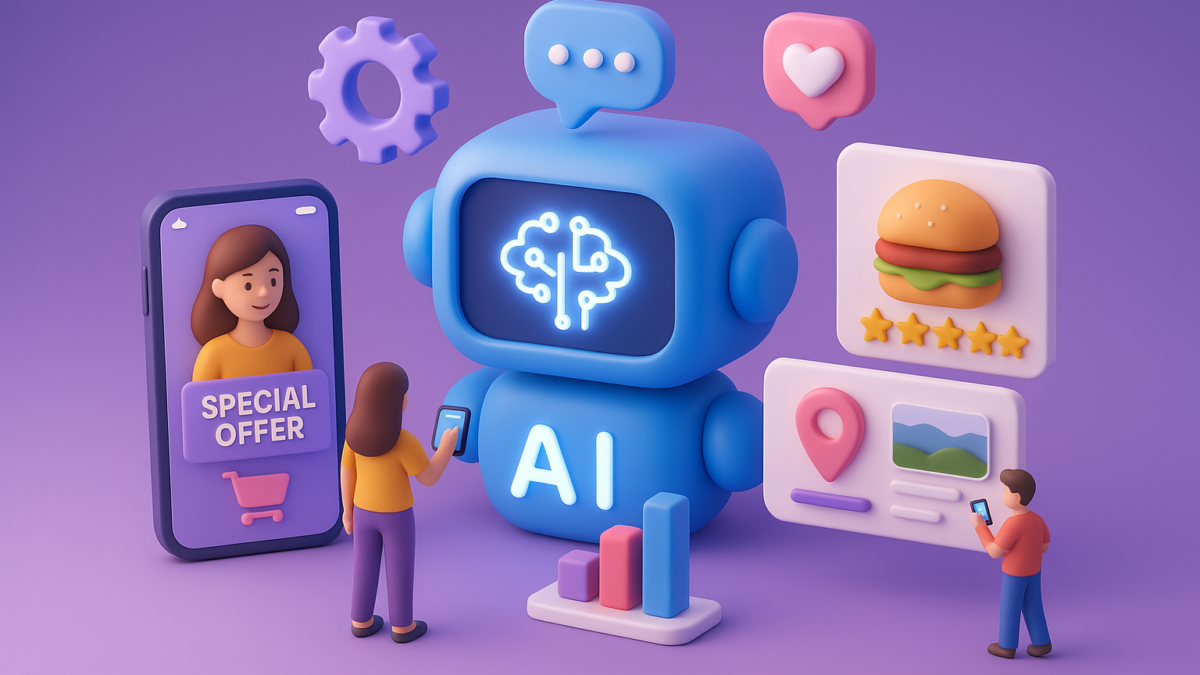AI-Powered Micro-Moments: How Hyper-Personalization is Redefining Customer Engagement in 2025
Table of Contents
In today’s digital-first world, consumers expect instant, relevant, and personalized experiences at every touchpoint. The concept of “micro-moments”—those small instances when a person turns to their device to learn, discover, or make a decision—has become central to modern marketing. Now, with artificial intelligence (AI) stepping in, these micro-moments are becoming hyper-personalized, revolutionizing how brands engage with customers.
This blog explores the role of AI in shaping micro-moments, the impact on customer engagement, and strategies businesses can adopt to stay ahead in 2025.
What Are Micro-Moments?
Google defines micro-moments as instances when consumers turn to their devices to act on a need to learn, discover, watch, or buy something. Examples include:
- Searching for nearby restaurants while traveling
- Looking up product reviews before making a purchase
- Checking tutorial videos to solve an immediate problem
These moments are intent-rich, and brands that respond promptly with relevant content can significantly influence decisions.
Enter AI: Hyper-Personalization at Scale
While micro-moments are powerful, delivering the right content to the right person at the right time has always been a challenge—until AI stepped in.
AI-powered tools analyze vast amounts of behavioral, demographic, and contextual data to deliver personalized experiences in real-time. For example:
- Recommendation engines suggest products based on browsing history.
- Dynamic content personalization changes website or app content to match user intent.
- Predictive analytics anticipate consumer needs before they even arise.
The result? Micro-moments evolve into hyper-personalized interactions, making customers feel understood and valued.
Real-World Applications of AI-Powered Micro-Moments
1. E-Commerce
Online retailers leverage AI to offer personalized product recommendations, flash deals, and content tailored to the user’s journey. For instance, if a user browses running shoes, AI can instantly highlight matching apparel, reviews, and nearby store availability—capturing the micro-moment when the user is most likely to convert.
Impact: Higher conversion rates, increased average order value, and improved customer loyalty.
2. Travel and Hospitality
AI predicts traveler preferences and provides contextual offers at the exact moment of intent. For example, a traveler searching for flights to Paris may receive recommendations for hotels, local experiences, or restaurant deals, all in real-time.
Impact: Enhanced customer experience and higher booking rates.
3. Healthcare and Wellness
AI-driven apps can detect patterns in user behavior and provide timely health reminders, symptom tracking, or personalized workout plans. These micro-moments ensure users stay engaged and make better health decisions.
Impact: Increased patient adherence, better health outcomes, and stronger brand trust.
4. Entertainment and Media
Streaming platforms like Netflix and Spotify use AI to analyze viewing/listening habits and deliver content recommendations instantly. By capturing micro-moments, users are presented with content they are most likely to enjoy, keeping engagement high.
Impact: Longer session times, higher subscription retention, and improved user satisfaction.
Why Hyper-Personalization Matters
- Customer Expectations Are Rising
Consumers now expect brands to understand them and respond in real-time. Generic messaging no longer cuts it. - Improved ROI
Hyper-personalized interactions significantly increase conversion rates and marketing ROI by targeting the right audience at the right moment. - Competitive Advantage
Brands that leverage AI to capture micro-moments stay ahead of competitors by providing relevant, memorable experiences.
Challenges and Considerations
While AI-powered micro-moments are transformative, businesses must navigate certain challenges:
- Privacy concerns: Collecting personal data responsibly and complying with regulations like GDPR and CCPA.
- Data quality: Hyper-personalization depends on accurate, real-time data.
- Over-personalization: Bombarding users with overly specific recommendations can feel intrusive.
Balancing AI-driven personalization with user trust is crucial for success.
How Businesses Can Implement AI-Powered Micro-Moments
- Map Customer Journeys – Identify key micro-moments where users are most likely to engage.
- Invest in AI Analytics – Use predictive analytics and recommendation engines to deliver relevant content.
- Test and Optimize – Continuously monitor user interactions and refine strategies based on insights.
- Prioritize Privacy – Be transparent about data usage and give users control over their information.
The Future of Hyper-Personalized Engagement
By 2025 and beyond, AI-driven micro-moments will become even more intelligent, with predictive models anticipating consumer intent before it happens. Voice assistants, AR/VR, and IoT devices will integrate seamlessly into everyday life, creating context-aware interactions that feel natural, timely, and personalized.
Brands that embrace this evolution will not only capture attention but also build lasting relationships with their customers.
Final Thoughts
AI-powered micro-moments are more than a trend—they’re the future of customer engagement. By delivering hyper-personalized experiences in real-time, brands can meet rising expectations, increase conversions, and foster loyalty.
In 2025, the companies that understand, predict, and act on micro-moments will lead their industries. The question isn’t whether to adopt AI-driven personalization—it’s how quickly you can integrate it into your customer engagement strategy.
Amplify Your Content Reach Today! Partner with iTMunch for B2B Content Syndication and get your content in front of the right audience—fast. Start now!
You May Also Like: What Is Whitepaper Lead Generation? A Complete Guide for 2025





